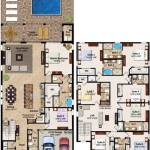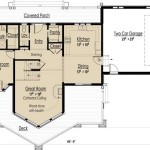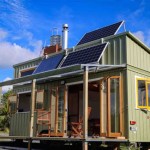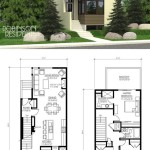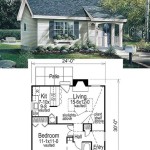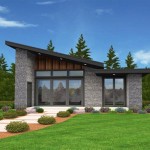Underground House Plans are blueprints that offer a unique approach to residential construction. These plans involve the construction of living spaces below the surface of the earth, providing a myriad of benefits ranging from enhanced sustainability to increased security.
The concept of underground houses is gaining traction due to their ability to withstand extreme weather conditions and minimize environmental impact. In regions prone to hurricanes or earthquakes, underground homes provide a safe haven and reduce potential property damage. Furthermore, the earth’s natural insulation properties regulate interior temperatures, leading to reduced energy consumption.
In the following sections, we will explore the advantages and disadvantages of underground house plans, discuss the various design considerations involved, and provide detailed information on the construction process. We will also showcase innovative underground home designs that demonstrate the versatility and adaptability of this unique approach to housing.
Underground house plans offer several notable advantages over traditional above-ground construction:
- Enhanced durability
- Improved energy efficiency
- Increased security
- Environmental friendliness
- Protection from extreme weather
- Unique and innovative designs
- Natural insulation
- Reduced construction costs
These benefits make underground house plans an attractive option for homeowners seeking sustainable, resilient, and cost-effective housing solutions.
Enhanced durability
Underground house plans offer enhanced durability compared to traditional above-ground construction due to several factors:
- Protection from the elements: Underground homes are shielded from harsh weather conditions such as rain, snow, wind, and hail. The earth’s natural insulation and protective layers safeguard the structure from damage caused by these elements, extending its lifespan.
- Resistance to pests and rot: Unlike above-ground homes that are susceptible to wood rot, termites, and other pests, underground homes are largely immune to these threats. The absence of wooden structures and the controlled environment below the surface create an unfavorable environment for pests and prevent rot.
- Structural stability: The earth surrounding an underground home provides excellent structural support, eliminating the need for extensive foundations and reinforcement. This inherent stability makes underground homes highly resistant to earthquakes, hurricanes, and other seismic events.
- Fire resistance: Underground homes are naturally fire-resistant due to the lack of flammable materials and the absence of oxygen below the surface. This inherent fire resistance provides peace of mind and reduces the risk of catastrophic damage in the event of a fire.
The enhanced durability of underground house plans translates into lower maintenance costs, increased longevity, and a safer living environment for homeowners.
Improved energy efficiency
Underground house plans offer significant improvements in energy efficiency compared to traditional above-ground construction due to several key factors:
- Stable temperatures: The earth maintains a relatively constant temperature below the surface, which reduces the need for heating and cooling systems. Underground homes can leverage this natural insulation to maintain a comfortable indoor temperature throughout the year, minimizing energy consumption.
- Reduced heat loss: The earth’s soil acts as an effective thermal barrier, preventing heat loss during the winter months. This reduces the demand on heating systems and lowers energy bills.
- Passive solar heating: Underground homes can be designed to incorporate passive solar heating, utilizing the sun’s energy to warm the interior. This is achieved through the use of large windows facing south, which allow sunlight to enter and warm the thermal mass of the earth and the home’s interior.
- Reduced air infiltration: Underground homes are naturally airtight due to the surrounding soil, which minimizes air infiltration and reduces heat loss. This eliminates the need for additional insulation and weatherstripping, further enhancing energy efficiency.
The improved energy efficiency of underground house plans translates into lower energy costs, a reduced carbon footprint, and a more comfortable and sustainable living environment.
Increased security
Underground house plans offer increased security compared to traditional above-ground construction due to several key factors:
1. Natural protection: The earth surrounding an underground home provides a natural barrier against intruders, making it more difficult to break into compared to above-ground homes. The lack of visible entry points and the presence of soil and rock make it challenging for unauthorized individuals to access the property.
2. Concealment: Underground homes are often less visible than above-ground homes, providing an added layer of security. The home’s entrance can be hidden or disguised, making it difficult for potential intruders to locate and target the property.
3. Structural resilience: Underground homes are inherently more structurally resilient than above-ground homes due to the surrounding earth’s support. This structural stability makes it more challenging for intruders to gain entry by force, providing peace of mind and enhanced protection for occupants.
4. Reduced risk of natural disasters: Underground homes are less susceptible to damage caused by natural disasters such as hurricanes, tornadoes, and earthquakes. The earth’s protective layers shield the home from high winds, debris, and seismic activity, reducing the risk of structural damage and injuries to occupants.
The increased security offered by underground house plans provides homeowners with a sense of safety and protection, reducing the likelihood of break-ins, vandalism, and other security concerns.
Environmental friendliness
Underground house plans offer significant environmental benefits compared to traditional above-ground construction due to several key factors:
- Reduced carbon footprint: Underground homes are naturally energy-efficient, requiring less heating and cooling than above-ground homes. This reduced energy consumption leads to a lower carbon footprint and a more sustainable living environment.
- Sustainable materials: Underground homes can be constructed using sustainable and eco-friendly materials, such as rammed earth, recycled concrete, and reclaimed wood. These materials have a lower environmental impact compared to traditional building materials, promoting sustainability and reducing the home’s carbon footprint.
- Natural insulation: The earth surrounding an underground home provides excellent natural insulation, eliminating the need for additional insulation materials. This reduces the use of synthetic insulation products, which can have a negative environmental impact.
- Preservation of natural landscapes: Underground homes minimize the disruption to the natural landscape compared to above-ground construction. The home’s footprint is concealed below the surface, preserving the surrounding environment and reducing the impact on local ecosystems.
The environmental friendliness of underground house plans aligns with the growing demand for sustainable and eco-conscious living, offering homeowners a responsible and environmentally friendly housing solution.
Protection from extreme weather
Underground house plans offer superior protection from extreme weather events compared to traditional above-ground construction due to several key factors:
- Natural insulation: The earth surrounding an underground home provides excellent insulation, protecting the interior from extreme temperatures. During the summer, the earth’s thermal mass absorbs and dissipates heat, keeping the home cool and comfortable. In the winter, the earth’s warmth radiates inward, reducing the need for heating and maintaining a comfortable indoor temperature.
- Shelter from storms: Underground homes are naturally sheltered from hurricanes, tornadoes, and other severe storms. The earth’s protective layers absorb the impact of high winds, debris, and projectiles, minimizing the risk of damage to the home and its occupants. Additionally, the lack of above-ground structures eliminates the risk of wind uplift and structural collapse.
- Flood resistance: Underground homes are highly resistant to flooding. The earth’s natural drainage and the absence of below-grade basements prevent water from accumulating and penetrating the home. This protection is particularly valuable in areas prone to heavy rainfall and flooding.
- Earthquake resilience: The earth’s stability and the inherent structural strength of underground homes make them highly resilient to earthquakes. The surrounding soil absorbs seismic energy, reducing the impact on the home’s structure. Additionally, the absence of windows and large openings minimizes the risk of glass breakage and flying debris.
The protection from extreme weather offered by underground house plans provides homeowners with peace of mind and a safe haven during severe weather events.
Unique and innovative designs
Underground house plans offer unique and innovative design possibilities that are not available in traditional above-ground construction. These designs take advantage of the earth’s natural features and provide homeowners with unconventional and inspiring living spaces.
- Curved walls and organic shapes: Underground homes can incorporate curved walls, rounded corners, and organic shapes that are difficult to achieve in above-ground construction. These designs create a fluid and harmonious living environment, blurring the boundaries between the interior and exterior spaces.
- Natural lighting and ventilation: Underground homes can utilize natural lighting and ventilation techniques to create bright and airy living spaces. Skylights, light tubes, and carefully placed windows allow natural light to penetrate the home, reducing the need for artificial lighting. Passive ventilation systems harness the earth’s natural temperature and airflow to provide fresh air and reduce energy consumption.
- Indoor courtyards and gardens: Underground homes can incorporate indoor courtyards and gardens, bringing the beauty of nature into the subterranean environment. These green spaces provide natural light, fresh air, and a sense of connection to the outdoors, enhancing the overall well-being of the occupants.
- Multi-level designs: Underground homes can be designed with multiple levels, creating a sense of spaciousness and verticality. These multi-level designs allow for distinct living areas, private spaces, and unique architectural features, maximizing the use of the available space.
The unique and innovative designs of underground house plans offer homeowners the opportunity to create truly extraordinary and sustainable living environments that seamlessly blend with the surrounding landscape.
Natural insulation
Natural insulation is a key feature of underground house plans that contributes to their energy efficiency and sustainability. The earth surrounding an underground home acts as a natural insulator, regulating the interior temperature and reducing the need for heating and cooling systems.
The earth’s thermal mass absorbs and stores heat from the sun during the day, releasing it slowly at night. This thermal regulation helps to maintain a comfortable indoor temperature year-round, reducing energy consumption and lowering utility bills.
The thickness and composition of the earth surrounding an underground home influence its insulating properties. Soils with high thermal conductivity, such as clay and loam, provide better insulation than soils with low thermal conductivity, such as sand and gravel. The depth of the home below the surface also affects its insulation value, with deeper homes experiencing more stable temperatures and reduced heat loss.
In addition to the earth’s natural insulating properties, underground homes can incorporate additional insulation materials to further enhance their energy efficiency. These materials, such as rigid foam insulation or spray foam insulation, can be applied to the walls, roof, and floor of the home to minimize heat loss and improve overall thermal performance.
The natural insulation provided by the earth, combined with the use of additional insulation materials, creates a highly energy-efficient living environment in underground homes. This reduces the reliance on heating and cooling systems, lowers energy costs, and contributes to a more sustainable and environmentally friendly lifestyle.
Reduced construction costs
Underground house plans offer several advantages that can lead to reduced construction costs compared to traditional above-ground construction:
- Reduced excavation costs: In some cases, the excavation costs for an underground home can be lower than the foundation costs for an above-ground home. This is because the excavation process for an underground home involves digging into the earth, which is typically less expensive than building a foundation.
- Simplified foundation: Underground homes do not require extensive foundations since the surrounding earth provides natural support to the structure. This can significantly reduce the cost of the foundation system, which is a major expense in traditional above-ground construction.
- Energy-efficient design: The natural insulation provided by the earth in underground homes reduces the need for expensive insulation materials and complex heating and cooling systems. This can result in significant savings on energy costs over the life of the home.
- Reduced maintenance costs: Underground homes are less susceptible to damage from weather elements and pests, which can lead to lower maintenance costs over time. The earth’s protective layers shield the home from harsh conditions, reducing the need for frequent repairs and replacements.
While the initial construction costs of an underground home may be higher than an above-ground home due to excavation and waterproofing considerations, the long-term cost savings on energy, maintenance, and durability can make underground house plans a cost-effective option in the long run.










Related Posts

